Built to Last and Evolve: The Trends, Challenges and Opportunities for PVC Piping Solutions
Discovered in the late 19th century, polyvinyl chloride (PVC) is now a widely used polymer that has reshaped numerous industries worldwide. While still affected by bias and controversy, nowadays, PVC is largely seen as an environmentally sound material choice with a wide range of applications and excellent engineering properties. As the polymer industry embraces the shift toward the circular economy, we invited our PVC experts to discuss the past, present and future prospects of PVC piping systems.
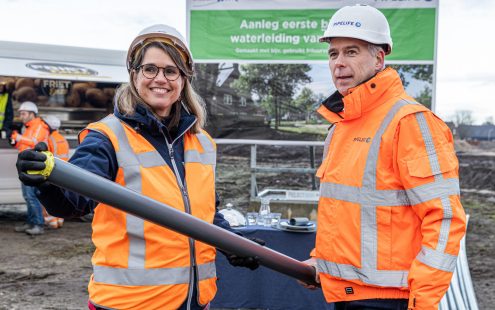
PVC Pipes: A Fundament for Sustainable Infrastructure
Polyvinyl chloride (PVC) is one of the most popular polymers in the world, widely used in numerous industries. In building and construction, PVC piping systems offer a wide range of advantages, including very high ring stiffness, excellent corrosion- and chemical resistance, and a service life of at least 100 years.
From water supply to cable protection and from sewage to hydrogen transportation, PVC pipes have become integral to infrastructure networks worldwide.
"PVC has a very high elastic modulus, which allows to achieve high ring stiffness and reliability of non-pressure piping systems," explains Ove Soderberg, Process Development Coordinator at Pipelife Sweden. "And when it comes to PVC pressure pipes used in water supply, this material has lower bacterial growth compared to ductile alternatives. It also excels with high stability and resistance to oxidation."
Is PVC an Environmentally Friendly Choice?
PVC pipes have a favorable Life Cycle Assessment compared to both plastic and non-plastic alternatives. Life Cycle Assessment is a systemic analysis of the environmental load of products through all phases, from resource extraction to production, use and disposal.
"When we talk about the content of PVC, only 43% is carbon," Soderberg says. "The other 57% is common salt, which means the material requires less fossil material to produce."
Together with relatively low product weight, which brings down transportation emissions and exceptionally long service life, the environmental advantages over other piping materials are clear. But there is still work to be done to push forward the material's circularity and further reduce its footprint.
Zoran Davidovski, Head of R&D and Sustainability at Pipelife, emphasizes that the PVC industry is currently exploring several sustainability-focused directions. According to him, the joint approach makes the greatest impact.
"On the one hand, there is the increased use of recycled and bio-attributed PVC; on the other — optimization of product design, transportation and manufacturing," he says. "While the current technologies are not yet enough to bring us to complete net zero, there is a lot we as manufacturers can do and have been doing."
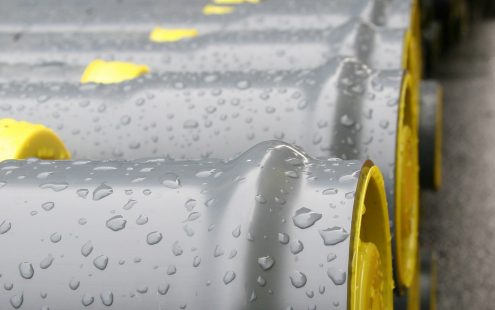
Back to the Basics: Sustainable Production and Product Design
When it comes to environmental impact, the differences can vary greatly even among conventionally sourced PVC products. Their carbon footprint depends on several key factors, with raw material origin often not entered into the equation, says Soderberg.
"For example, at Pipelife Sweden, 90% of our PVC raw material comes from Scandinavia and is produced using renewable energy. Yet the calculations for Environmental Performance Declarations are made using an average figure for Europe, despite much of the raw material being imported from third countries and having higher emissions. Encouraging customers to opt for locally sourced products is important for minimizing carbon footprint in all industries, and PVC products are no exception."
The impacts of tradition and bias in the construction sector pose another obstacle plastic pipe manufacturers have to overcome. Historically, heavier products containing more material were considered more durable and reliable. Yet, thanks to the evolvement of design and manufacturing technologies, creating lighter products that still fully meet all industry standards is possible.
"Overall reduction of raw materials used is something I expect happening across the industry. Our production sites are already 100% powered by renewable energy, and transportation-related emissions are to be eliminated in the future. Using less raw material where possible is something all manufacturers can explore, for example, by optimizing their product designs or using non-carbon additives like chalk."
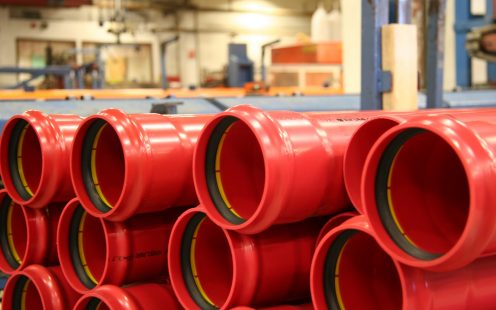
Closing the Loop: PVC Recycling
Mechanical recycling of PVC waste is currently the leading green trend in the industry. Despite widespread bias that the recyclability of PVC is poor, the material is fully recyclable with minimal impacts on its performance. Each kilogram of recycled PVC saves roughly 2 kilograms of CO2, and more than 770,000 metric tons of PVC waste were recycled in 2019.
The European Plastic Pipes and Fittings Association (TEPPFA) has set a target of recycling at least 900,000 tons of PVC per year by 2025.
Still, environmental responsibility and public health protection must be taken into account. Historically, lead-based heat stabilizers were used by the PVC industry. Nowadays, these have been completely phased out across Europe, and modern PVC piping systems meet the highest safety standards. However, streams of PVC waste can still contain minor amounts of lead.
"In the 90s, Sweden's major PVC pipe manufacturers, including Pipelife, came together to find an environmentally friendlier alternative to lead stabilizers," Soderberg says. "Pipelife Sweden was among the trailblazers that started mass producing PVC pipes using organic-based and calcium-zinc stabilizers in 2001. The technology was quickly adopted in Norway and Finland, and in a few years, Pipelife became Europe's first major plastic pipe manufacturer that had phased out lead stabilizers groupwide."
A wide-scope EU law — the Regulation on the registration, evaluation, authorization and restriction of chemicals (commonly abbreviated as the REACH) — regulates PVC recycling across the bloc, setting a unified set of requirements for all stakeholders. As part of the regulation, recycled PVC material is to have a maximum lead content of 1.5 wt% and can be used only in the middle layer of multilayer PVC pipes, enclosed by virgin PVC from both sides. The requirement will come into force in November 2024.
Davidovski emphasizes that Europe's plastic pipe manufacturers have welcomed the REACH as the regulation creates a level playing field.
"These requirements are appreciated and in line with what we have already been doing for years," he says. "For PVC non-pressure pipes, our goal is to increase the amount of recycled material in the middle layer up to 60-70% while still ensuring technical properties that meet the highest standards in construction."
Leading by Example: The Netherlands Case Study
The Netherlands is one of the countries where non-pressure pipes containing a mid-layer of recycled PVC have already become a go-to choice. PVC is the country's most widely used pipe material, and strong public support for waste reduction has catalyzed both recycling technologies and the demand for circular products.
In fact, there is a nationwide regulation for all municipal PVC sewer systems to contain at least 40% recycled material. Higher percentages of recycled content are also allowed as long as the pipe meets the required mechanical properties, such as the nominal stiffness rating (SN) of at least 8.
"Three-layer pipes with a foam mid-layer made from PVC recyclate go back to the 80s, and the invention was made by Pipelife together with two other Dutch manufacturers," says Hugo Lamper, Outdoor Building and Infrastructure Manager at Pipelife Netherlands. "Initially, it was only 10% of PVC recyclate, but over the years, we discovered how to increase the amount of recycled material in the mid-layer, uptaking more waste."
The three-layer Renofort pipe system produced at the Pipelife Netherlands plant in Enkhuizen illustrates the trend. The durable pipes contain 50% recycled PVC and have become a favored choice for sewage and drainage systems nationwide.
"We developed Renofort because many customers were asking for an SN 8 pipe with a higher recycled material content than the norm requires," Lamper adds.
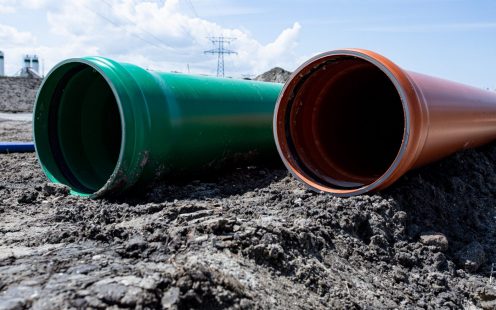
Chemical Recycling of PVC: Missing Puzzle Piece or Wishful Thinking?
Chemical recycling is an innovative approach to processing plastic waste that's currently not suitable for mechanical recycling due to the high content of additives, contamination or mixed materials. Another difference from mechanical recycling is that chemically recycled polymers are of a quality identical to their virgin alternatives.
Across Europe, several chemical recycling technologies are currently being tested and researched.
"Chemical recycling is energy-intensive, but in the future, it might be scaled and used to process certain streams of currently non-recyclable waste," states Davidovski. "In addition, chemical recycling of PVC is more complex due to the material having a higher chlorine content. Currently, we see faster progress in the polyolefin industry; chemical recycling of PVC remains more of an open question."
Nevertheless, some progress has been made, and chemical recycling processes like pyrolysis or hydrolysis that also entail chlorine recovery are now being developed. In the future, such technologies might offer an alternative to mechanically non-recyclable waste being incinerated or stored in landfills.
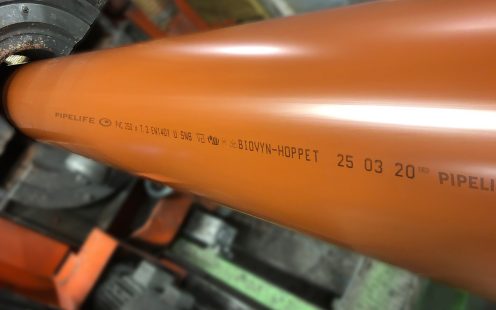
Bio-Attributed PVC: When Plastics Go Fossil-Free
Another option for bringing down the carbon footprint of PVC products is sourcing the material from renewable plant-based derivatives. Examples of non-food-based biomass sources used in PVC production as replacements for petroleum are sugar cane, wood pulp or used cooking oil.
The resulting bio-attributed PVC material boasts the same properties and application possibilities as conventional PVC and can be integrated into already existing manufacturing processes based on a mass balance concept. Pipelife currently offers up to 100% bio-attributed PVC pipes for customers in the Nordic countries and the Netherlands, with the plan to extend the offer to other markets in the near future.
Davidovski explains that using renewable raw materials is currently the only available technology that can be used for pressure applications and results in the production of carbon-neutral or even carbon-negative PVC.
"Bio-attributed PVC is more expensive compared to the conventionally sourced material. However, we have customers who appreciate the value this material brings, and we supply the product," he adds.
Could We Have More Fossil-Free PVC Pipes?
While the prices of bio-attributed PVC might go down as the demand and availability increase, there are limits to producing bio-derived raw materials without competing with the food chain. Thus, such products are unlikely to become the sole solution for the PVC industry's needs.
Furthermore, the acceptance of bio-attributed plastics in the construction sector is still behind the technology itself, even when it comes to environmental performance certifications, says Soderberg.
"Our supplier calculates emissions for bio-attributed PVC pipes, and we share these figures with our customers. However, we cannot have this information listed in EPD certificates, as the third-party issuer does not yet accept the mass-balance calculation principle. Challenging the current bureaucratic obstacles is crucial for making bio-attributed PVC products more appealing," he explains.
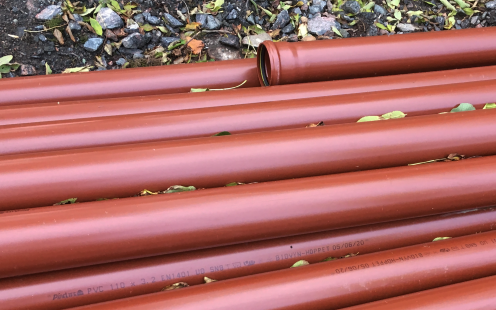.jpg)
The Future of PVC: Challenges and Commitments
The PVC industry has been making strides in sustainability and reducing greenhouse gas emissions across the production chain, but challenges remain. Using the lessons learned and ensuring a swift adoption of emerging technologies will be crucial to turning the European PVC industry into a low-carbon circular economy, Davidovski admits.
"Impressive progress has been achieved regarding both reducing emissions and increasing circularity, but there are still obstacles that have to be addressed — politically, economically and technologically. Overcoming these challenges will require close collaboration and shared responsibility among manufacturers, clients, and legislative bodies."
Find out more about
Get in Touch
Please choose your preferred way to get in contact with us. We will get back to you as soon as possible.
Fill our form